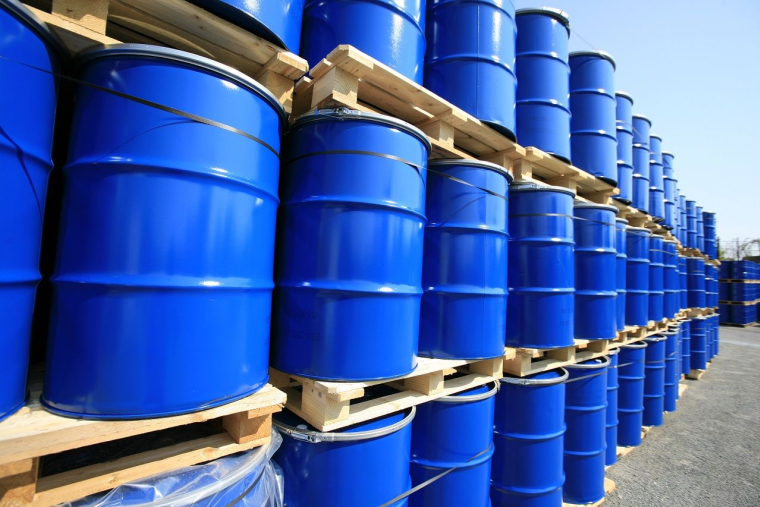
Barrils (credits: Adobe Stock)
The global oil market crossed a period of adjustment in 2025, marked by a slowdown in demand, a continuous increase in production by OPEC+, persistent commercial uncertainties and geopolitical tensions in the Middle East. These combined elements exert downward pressure on crude prices (except the conflict between Israel and Iran which supports crude prices) and make the prospects more uncertain for the coming months.
Oil market: the AIE anticipates a slowdown in demand
The International Energy Agency (IAI) has recently revised its forecasts for growth in global oil demand. After a relatively solid first quarter (with growth estimated at 990,000 barrels per day), demand should slow down to reach only 650,000 barrels per day on the rest of the year.
Over the age of 2025, average growth in oil demand is now expected at 740,000 barrels per day, a level lower than previous estimates. This revision is explained in particular by a weakening of consumption in China and India, but also by structural factors such as the boom in sales of electric vehicles and gains in energy efficiency, which slow down fuel consumption, especially in OECD countries.
CAP change: OPEC+ Relaunch its oil production
At the same time – and against all expectations – OPEC+ announced in early May an increase in its production of 411,000 barrels per day for the month of June, then a similar increase for July. These increases are added to a series of increases started since April, representing a total of a return to the market of almost 1.37 million barrels per day.
The Cartel’s displayed objective is twofold: regaining market share and sanctioning member countries that regularly exceed their production quotas such as Iraq and Kazakhstan.
Despite the risks of imbalance, OPEC+ claims that the fundamentals of the market remain solid, notably invoking historically low stock levels and an economic situation deemed stable.
However, analysts point out that the increase in supply weighs on prices and accentuates pressure on all producers, in particular American shale companies, which are more vulnerable to the decrease in prices.
According to UBS analysts, the market remains relatively tense, which could make it possible to absorb part of these additional volumes, especially since certain member countries are already in a situation of overproduction and that demand is experiencing a seasonal increase.
Even the armed conflict between Israel and Iran in June 2025 should not have significant consequences on the supply of global oil if the ceasefire continues after June 25, 2025, because the market is still in surplus.
What prospects for oil in 2025?
Oil prices have dropped sharply in April, reaching their lowest level for four years at just over $ 60 per barrel for Brent. This trend reflects both the impact of the increase in supply and persistent worries related to global trade tensions. The courses strongly rebounded after the attacks between Israel and Iran in June 2025. At the time of writing this article, they won more than 7.5 % in June 2025 in a volatile month marked by a large risk premium integrated into the rise in prices. Oil prices have gained up to 25 % above $ 79 per barrel before losing ground.
Although some signs of appeasement have been observed-including an agreement between the United States and the United Kingdom, as well as a temporary commercial truce with China-commercial conflicts continue to weigh on global economic prospects and therefore on the demand for oil.
In this context, analysts have revised their price forecasts downwards for the third consecutive time.
A survey conducted by Reuters with 40 economists in May provides an average price of Brent at $ 66.98 per barrel in 2025, against $ 68.98 in the previous month. American crude (WTI) is expected at $ 63.35, also decreasing.
For his part, Goldman Sachs maintains a cautious vision, anticipating a price of $ 60 for Brent this year and $ 56 for American crude. The bank even provides for a decline at $ 56 and 52 respectively in 2026, due to an excess estimated at 1 million barrels per day in 2025, which would increase to 1.5 million in 2026.
The prospects for the rest of 2025 therefore remain marked by an excess offer, a fragile demand and many volatility factors. American consumption and Chinese demand remain limited by economic uncertainty, progress in terms of energy efficiency and transition to electric mobility. In addition, the conflict in Ukraine continues to represent a geopolitical risk factor, although the markets seem to have integrated a large part in the current price of oil.
Investors must always take into account the elements that traditionally influence the evolution of oil prices to better anticipate the management of this market.
Among them are the prospects for economic growth, production adjustments outside OPEC, changes in Saudi Arabia production policies, unforeseen interruptions of the global supply and, finally, speculation around crude oil and the dynamics of the US dollar.
To remember: the coming months should confirm a tendency to moderate prices in a market always torn between excess of supply and low demand with prices strongly dependent on economic, technological and geopolitical developments worldwide.

